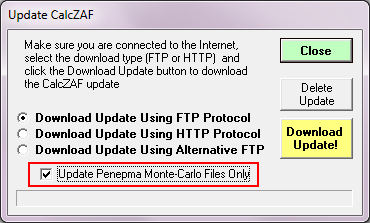Philippe Pinard, Hendrix Demers and I recently noticed that the x-ray intensities calculated from using a few of the pure element PAR files in the Standard GUI for Penefluor/Fanal were not correct. This was only the case for the gaseous elements: N, O, F, Ne, Cl, Ar, Kr, Xe and Rn. Now I don't suppose that many of you actually utilize pure gases as standards, even for your simulations, but we discovered the issue while writing up a paper on the use of alpha factors from Monte Carlo generated intensities
This was because I had assumed the room temperature densities for calculating the material files for these gaseous elements (if we had evolved on Pluto this would not have been an issue!).

The gaseous densities (~10^-3) were problematic because the default "bulk" geometry file (bulk.geo), specifies a thickness of only 0.1 cm or 1 mm. This makes these gaseous pure elements essentially a thin film experiment where some of the incident electrons actually transmit through the specimen geometry resulting in too low a generated x-ray intensity! Our solution was to simply force the pure gaseous element densities to 1.0 if they were less than 1.0. Obviously you can modify the densities from the GUI to whatever values you want and re-calculate them, and/or edit the bulk.geo file geometry, if you prefer.
So we re-calculated these gaseous pure elements (N, O, F, Ne, Cl, Ar, Kr, Xe and Rn) and they are now available for download by using the Help | Update menu in either CalcZAF or Probe for EPMA, by checking the Update Penepma Monte Carlo Files as seen here:

Remember, if you haven't updated CalcZAF and/or Probe for EPMA since we switched to secure https connections in August this year, you will need to manually download the CalcZAF.msi and/or ProbeForEPMA.msi installers on this page:
https://probesoftware.com/Update.htmland run the installer manually once. After this, you can continue to update CalcZAF and/or Probe for EPMA from the Help | Update menu again.
Or you can manually download the Penepma12.zip file from the various download sites if you prefer and unzip it to your user data folder (usually C:\UserData\Penepma12). The actual pure element PAR files are in the \Penfluor\Pure sub folder.